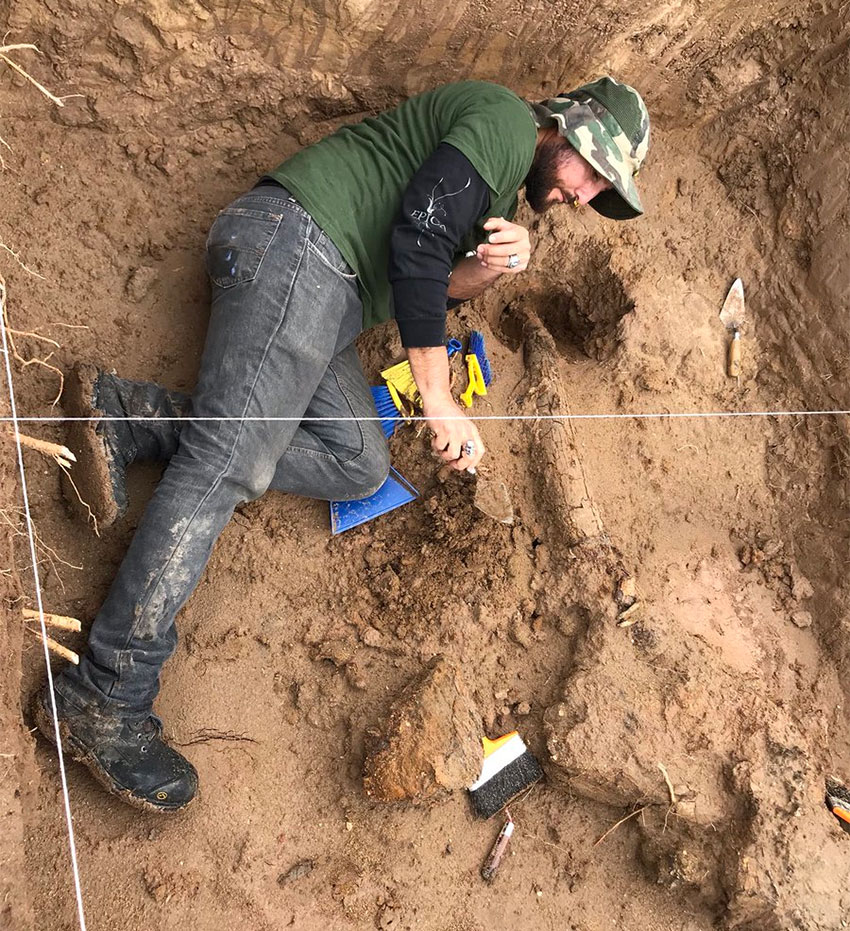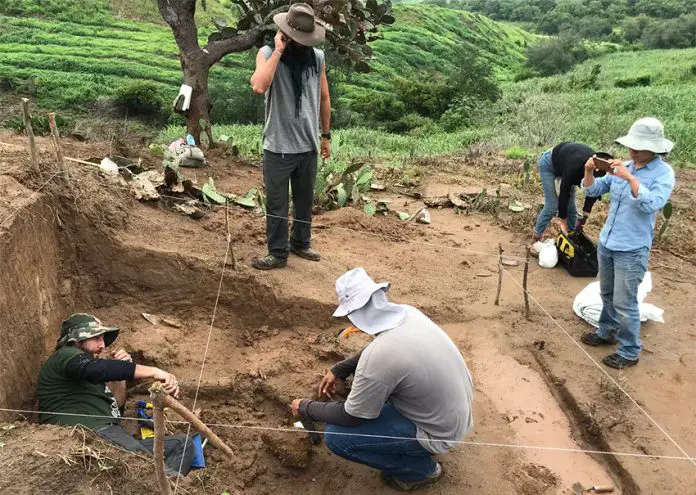A recent discovery of prehistoric animal bones that are believed to be at least 13,000 years old has revealed the paleontological wealth of southern Jalisco.
Community museum worker and amateur paleontologist Antonio Vargas Moreno was walking on a hill in the town of San José de la Tinaja last month when he found what later would be identified as part of the skull of a mammoth.
The cranium was exposed after heavy rain caused erosion on the hillside.
Vargas advised the Paleontology Museum in Guadalajara and the National Institute of Anthropology and History (INAH) about his find, and experts from both subsequently traveled to San José, a community of some 400 residents in the municipality of Zapotiltic.
INAH Jalisco archaeologist Eduardo Ladrón de Guevara told the news agency EFE that further investigation of the hill revealed the presence of more mammoth bones as well as those of a prehistoric horse and a glyptodon, an ancestor of the armadillo.

The animals inhabited southern Jalisco up until about 13,000 years ago and were attracted to the area where the bones were found due to the presence of lakes and lagoons.
Archaeologists extracted the mammoth skull and, along with the other bones, it was transferred to the Paleontology Museum.
“Jalisco is rich in [animal] remains,” Ladrón said, adding that people who find fossilized bones often keep them in their own homes.
He explained that’s not a crime because under Mexican law, anyone can be a custodian of archaeological heritage.
However, Ladrón said that the option is “not advisable” because ancient bones can deteriorate without adequate conservation measures.
The remains transferred to Guadalajara will be subjected to a restoration process after which they will be ready to put on public display, said Paleontology Museum official Ricardo Alonso.

“We do a mechanical cleaning then a strengthening [process] to harden the remains,” he said, adding that broken bones are put back together “piece by piece” until they are ready for exhibition.
Alonso said that restoring all the recently-discovered bones could take as long as a year, a process that Ladrón said “allows us to reconstruct part of the history of the state and country.”
Source: EFE (sp)
